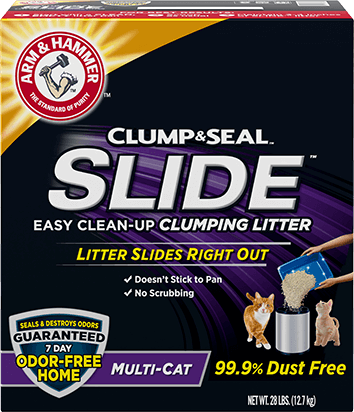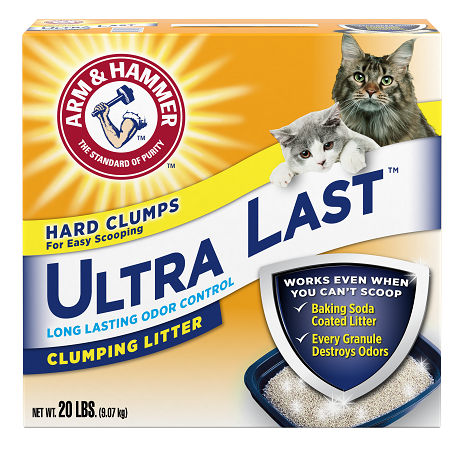
Clay Cat Litter is the Most Common Kitty Litter
Most cat litters, whether clumping or non-clumping, are made of a mixture of clay types. This wasn’t always the case, though. Before kitty litter was invented, cat owners used sand, dirt, ash, or old newspaper to fill their cat’s toilet box. You might still hear some people referring to their cat’s toilet as the “sandbox” for this reason. In 1947, Edward Lowe gave his neighbor a container of Fuller’s Earth, a term used to describe clay minerals capable of absorbing their weight in liquid, and modern cat litter was born.
Fuller’s Earth worked so much better than the cheaper (or free!) alternatives of sand and paper that cat owners were willing to pay for the product, despite naysayers’ predictions. Today, cat litter is an almost $10 billion industry in the United States and if you’re browsing the litter selection online or at your local pet or grocery store, you’ll discover that are many, many kinds of litter to choose from.
Different Kinds of Clay Cat Litter for Clumping and Non-Clumping
Most cat litters are variations of the original Fuller’s Earth formula, but that doesn’t mean that 21st century cat litters are the same as post-World War II litters. Companies tweak the types of clays and other ingredients used to create kitty litter formulas that have different levels of absorption and odor control. So while most cat litters have the same basic ingredients, the type, mixture, and ratios of ingredients, as well as other additives do make a difference when it comes to how well they work.
The most common clays used in cat litters are bentonites, such as sodium bentonite or calcium bentonite, that can swell up to 15 times their original volume. Other common clays added to cat litter mixtures are sepiolite, montmorillonite and kaolinite, depending on whether it is a clumping or non-clumping formula.
To get technical, all of the clays found in cat litter are hydrous aluminum silicates, formed from volcanic ash millions of years ago in the Cretaceous period (you know, the time period of the great extinction, probably from when a meteor struck the earth). These clays work well in cat litter because they trap moisture between layers of the clay, creating a negative ionic charge that attracts water and liquid.
Perhaps appropriately for its use in kitty litters, the negative charge imbalance in the clay is caused by cations (yes, cat-ions). Many clumping cat litters literally attract cat urine to cations and bond them together.
Today, roughly 40% of cat litter sold in the US. is the traditional clay, non-clumping formula, while clumping cat litters made of clay another ingredients makes up the other 60%.
Ingredients in Non-Clay, Natural Cat Litters
Although clay is the most common cat litter ingredient, there are cat litters made from a variety of other materials, including pine chips, wheat, walnut shells, corn cobs, sawdust, and paper.
These alternatives to clay litter come in both clumping and non-clumping formulas. For example, ARM& HAMMER Naturals* Clumping Litter is made from corn, baking soda, and plant extracts to absorb cat urine and form hard clumps for easy scooping.
ARM & HAMMER™ Feline Pine™ litters come in a clumping and a non-clumping formula. The pellets are made from pine sawdust reclaimed from the lumber industry, and the clumping formula has a plant-based clumping agent added to the pine shavings.
Many people like natural cat litters like Feline Pine™ or those made from wheat or other plant materials because they are very low dust and control tracking as well as absorb odors.
*Also contains mineral oil for dust control, and artificial scent added




